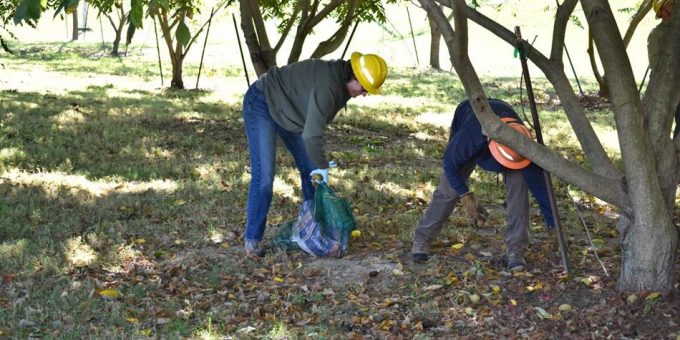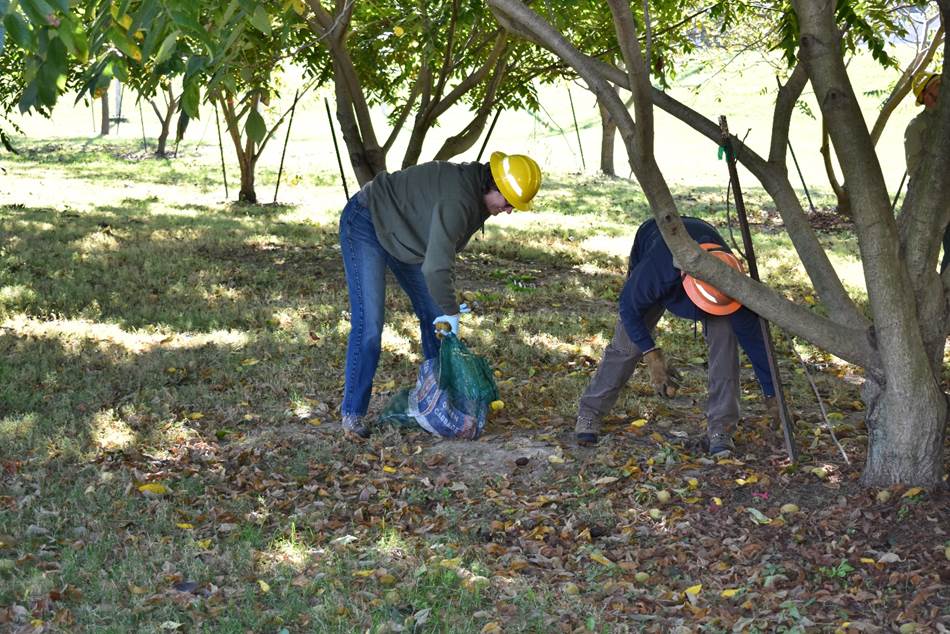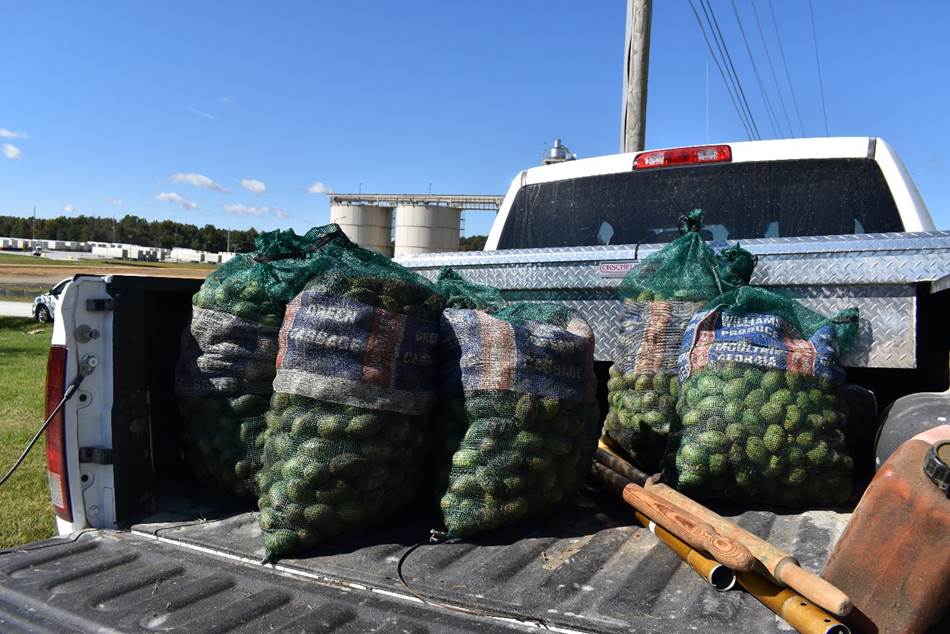
(BEDFORD) – In 2012, USDA Forest Service staff from the Hoosier National Forest (HNF), the Eastern Region National Forest genetics program, the Northern Research Station (NRS), and the Hardwood Tree Improvement and Regeneration Center (HTIRC) at Purdue planted approximately 60 grafted butternut trees in a seed orchard as part of a larger effort by the Forest Service to conserve the species and to breed resistance to butternut canker disease which has been killing this species throughout its native range for over 40 years.

Butternut (Juglans cinerea) is a tree in the walnut family known for its excellent nut production and timber quality. A great food-producer for wildlife, its wood is also prized for its soft, easily worked nature, patterned grain, light cinnamon color and satin-like polishing capability. They were also heavily utilized by Native Americans and early settlers for their nutritional and medicinal properties. The number of butternut trees has continued to decline and outside of several locations it no longer regenerates naturally in the United States making it functionally extinct. It is currently listed as endangered in Canada, and in the U.S. has a conservation status of either critically imperiled (S1), imperiled (S2), or vulnerable (S3) in 21 states.
The seed orchard planted in 2012, and added to in 2013, is a partnership between the HNF, the USDA Forest Service NRS and a private furniture manufacturing company located in Huntingburg, Indiana, Office Furniture Systems (OFS Brands). In keeping with OFS’s long history of promoting forest stewardship, they provided the location to establish the butternut seed orchard – a large, open area with plenty of sun and little concern about predation from deer, squirrels, etc. They also keep the area mowed and have even watered the trees when there has been drought. Hoosier National Forest staff monitor and care for the trees, as well as collect the seeds annually. Research teams in the NRS / HTIRC have focused on the pathology of butternut canker disease, the conservation genetics of butternuts, the identification of butternut habitat, and the propagation of butternut seed orchards to supply seeds for National Forests and the American public. For more information on current research visit https://doi.org/10.3389/fpls.2020.580693.

The butternut trees in this OFS / HNF orchard were all collected from healthy living trees in southern Indiana; some from the HNF itself and others on private forests. Even a few southern Ohio trees were included as a similar orchard for the Wayne NF was concurrently created. Currently, the HTIRC and the Indiana Department of Natural Resources, Division of Forestry are developing resistant hybrids through classical breeding at Purdue University and the Vallonia State Nursery. National Forests have created regional pure butternut seed orchards across the northeast region to conserve the species for future restoration.
In early October, Hoosier National Forest staff collected butternut seeds for the ninth time. The 300 pounds of nuts were taken to the Indiana Division of Forestry’s Vallonia State Nursery, where the HTIRC staff will pick them up, hull them, and send them out to nurseries to grow seedlings.

“Maintaining biodiversity in the central hardwoods region is very important. We’d hate to lose a species as important to wildlife and people as the butternut. We’re grateful to have the opportunity to partner with OFS, which allows us to propagate them in a cost-effective manner,” said Chris Thornton, ecosystems program manager for HNF.
Landowners interested in growing butternuts should be aware that currently no pure butternut is proven to be canker resistant long-term. Some selections are promising, but more testing is required to confirm disease resistance as the oldest screening tests are now just 18 years old. Note that the Indiana Division of Forestry has been selling hybrid butternuts for more than 10 years in Indiana which have proven more resistant to butternut canker disease. Most recently, the Forest Service and HTIRC researchers have found site differences dramatically affect butternut canker disease. Upland sites can be very suppressive to disease while bottomland sites can have severe disease pressure leading to cankers on every tree and 10 to 20% mortality within 15 years.
Butternut is shade-intolerant, so it must be in the main canopy to survive and grow, and they need full sunlight to regenerate. Seedlings are available to the Hoosier National Forest, private landowners and others interested in re-establishing this important species to the native woodlands of Indiana. Next spring, the 2019 seed crop will be available from Clements Nursery, West Virginia Division of Forestry.



